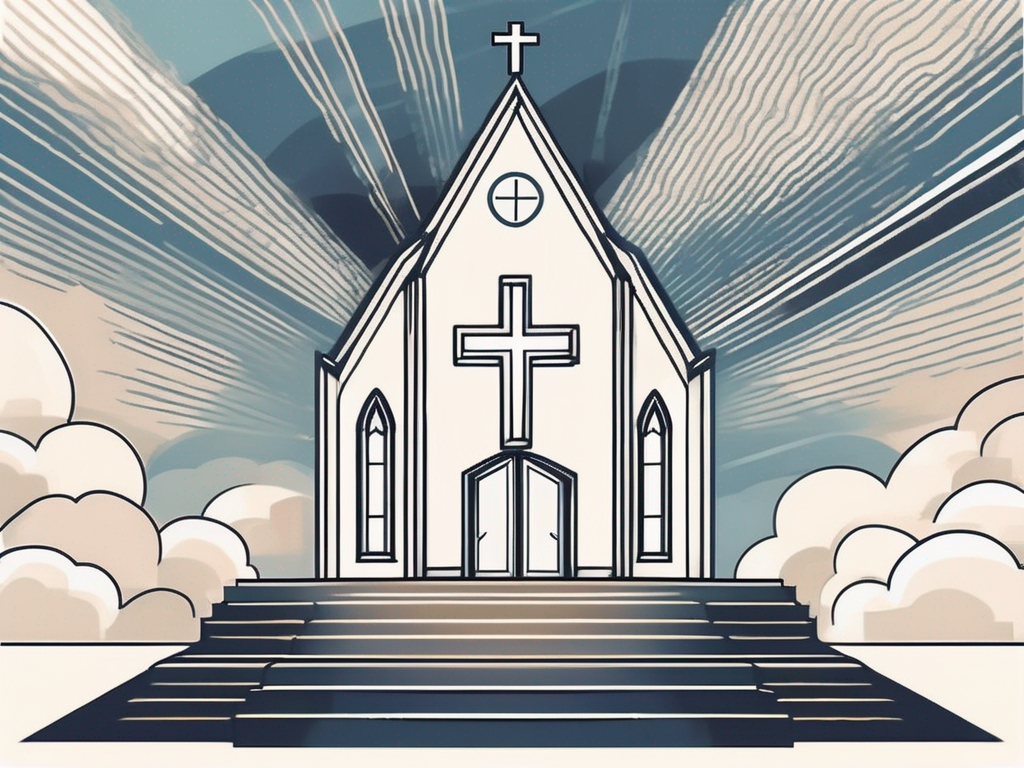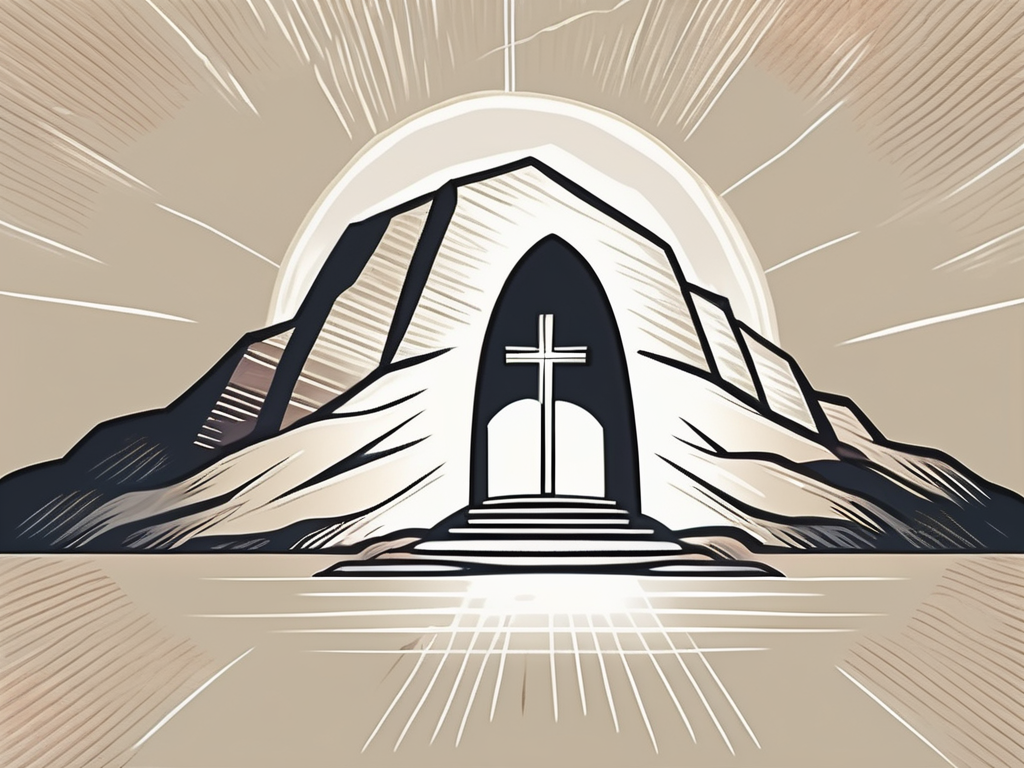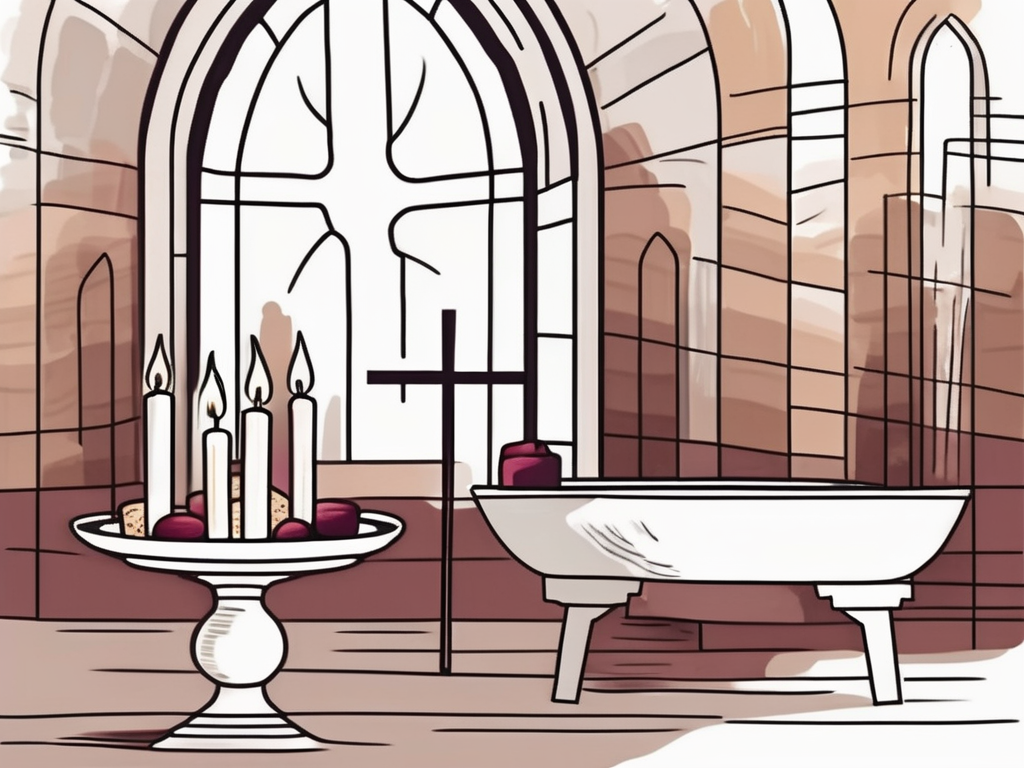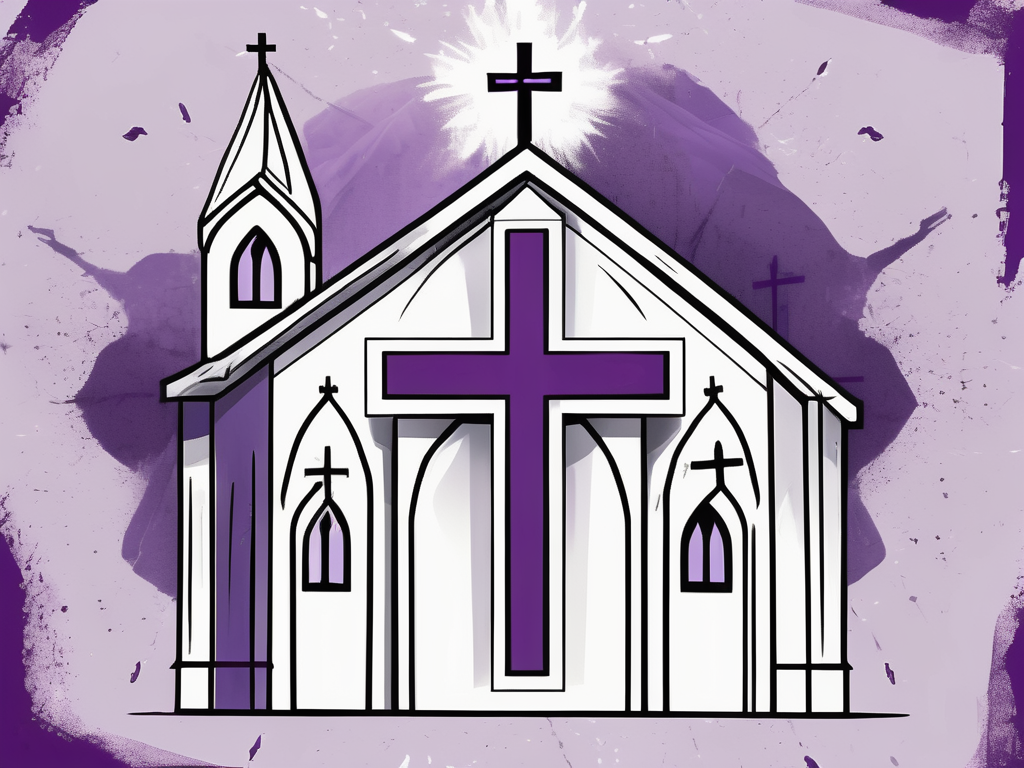Easter is a significant holiday in Christianity that commemorates the resurrection of Jesus Christ. It is a time of joy and celebration for believers around the world. In this comprehensive guide, we will explore the various events and teachings of Jesus that took place during the Easter season. From the Last Supper to the Ascension, let’s delve into the incredible story of what Jesus did on Easter.
Understanding the Significance of Easter in Christianity
Before we dive into the specific events of Easter, let’s first grasp the significance of this extraordinary season in Christianity. Easter is the cornerstone of the faith, symbolizing the victory of Jesus over sin and death. It is a time of renewal and hope, reminding believers of the promise of eternal life through Christ’s resurrection.
Easter holds a special place in the hearts of Christians worldwide. It serves as a reminder of the immense love and sacrifice that Jesus demonstrated for humanity. The significance of Easter goes beyond the historical events; it represents the core beliefs and values of the Christian faith.
During this sacred season, Christians reflect on the profound impact of Jesus’ death and resurrection. It is a time of deep introspection and spiritual growth, as believers seek to understand the profound implications of these events in their own lives.
The Biblical Account of Easter
The biblical account of Easter can be found in the New Testament, where the Gospels detail the events leading up to Jesus’ crucifixion and subsequent resurrection. The story begins with Jesus entering Jerusalem during the Passover festival, welcomed by crowds waving palm branches and proclaiming Him as the Son of God.
This triumphant entry into Jerusalem marked the beginning of a series of events that would forever change the course of human history. Jesus’ actions and teachings during this time challenged the religious and political authorities, stirring both admiration and opposition.
Jesus then gathers His disciples for a final meal, known as the Last Supper, which holds deep symbolism for Christians. During this meal, Jesus institutes the sacrament of Communion, using bread and wine to represent His body and blood, which would be sacrificed for the redemption of humanity.
The Last Supper serves as a poignant reminder of Jesus’ selfless love and the sacrifice He was willing to make for the salvation of all. It is a time of reflection and gratitude for the ultimate act of love demonstrated by Jesus.
Theological Interpretations of Easter
While the biblical account of Easter remains constant, theologians have offered various interpretations throughout history. Some emphasize the atoning sacrifice of Jesus on the cross, highlighting the forgiveness of sins and salvation that result from His death. Others focus on the victorious resurrection, viewing Easter as a triumph over evil and the promise of new life.
These theological interpretations provide a rich tapestry of understanding and allow individuals to connect with the Easter message in a way that resonates with their own spiritual journey. They offer different perspectives on the significance of Jesus’ death and resurrection, inviting believers to explore the depths of their faith.
Regardless of theological perspective, the central message of Easter remains one of hope, redemption, and the ultimate victory of Jesus Christ. It is a time to rejoice in the triumph of light over darkness, love over hate, and life over death.
As Christians celebrate Easter, they are reminded of the transformative power of Jesus’ resurrection. It is a time to renew their commitment to living a life of love, compassion, and forgiveness, following in the footsteps of their Savior.
Through the centuries, Easter has continued to be a source of inspiration and strength for believers worldwide. It serves as a reminder that no matter the challenges they face, they can find hope and solace in the resurrection of Jesus Christ.
The Last Supper: Jesus’ Final Meal
One of the most significant events leading up to Easter is the Last Supper, where Jesus shared His final meal with the disciples. This gathering holds great importance in understanding the meaning behind Easter.
The Last Supper took place in an upper room in Jerusalem, where Jesus and His disciples gathered to celebrate the Passover feast. It was a time of reflection and preparation for what was to come. The atmosphere in the room was filled with a mix of anticipation, sadness, and confusion, as the disciples were unaware of the events that would unfold in the following days.
The Symbolism of Bread and Wine
During the Last Supper, Jesus broke bread and shared it with His disciples, instructing them to do the same in remembrance of Him. This act symbolizes the sacrifice of Jesus’ body on the cross, offering eternal life to all who believe in Him.
The bread that Jesus broke was unleavened bread, a symbol of purity and sinlessness. As He distributed it to His disciples, He explained that it represented His body, which would be broken for the salvation of humanity. This act of sharing the bread not only served as a physical nourishment but also as a spiritual reminder of the sacrifice Jesus was about to make.
In addition to the bread, Jesus took a cup of wine, symbolizing His blood shed for the forgiveness of sins. By participating in the sacrament of Communion, Christians remember and celebrate the sacrifice Jesus made for them.
The wine that Jesus shared with His disciples represented the new covenant between God and humanity. Just as the blood of the Passover lamb protected the Israelites from death in Egypt, Jesus’ blood would provide eternal redemption for all who believe in Him. The act of drinking the wine was a solemn reminder of the price Jesus was willing to pay for the salvation of mankind.
Jesus’ Predictions and Teachings
During the Last Supper, Jesus made several predictions and teachings that would soon be fulfilled. He foretold His betrayal by one of the disciples and His imminent death. Jesus also emphasized the importance of love and service, washing the feet of His followers as an example of humility and selflessness.
As Jesus washed the feet of His disciples, He demonstrated the true meaning of leadership and servanthood. This act was a powerful illustration of His love for His disciples and His willingness to serve them, even in the face of His impending suffering and death. It was a lesson in humility and a call to His followers to love and serve one another in the same way.
Through His teachings, Jesus deepened His disciples’ understanding of faith, love, and the purpose of His impending sacrifice. He spoke of the coming of the Holy Spirit, who would guide and empower them after His departure. He assured them that although He would physically leave them, His presence would always be with them through the Holy Spirit.
The Last Supper was a pivotal moment in the life of Jesus and His disciples. It was a time of reflection, instruction, and preparation for the events that would soon unfold. The symbolism of the bread and wine, along with Jesus’ predictions and teachings, added depth and significance to this final meal, making it a cornerstone of the Easter story.
Jesus’ Crucifixion: The Event of Good Friday
Good Friday commemorates the crucifixion of Jesus Christ, a pivotal event leading up to Easter. It is a solemn day of reflection, acknowledging the suffering and sacrifice Jesus endured for the salvation of humanity.
The Process of Crucifixion
Crucifixion was a brutal form of execution used by the Romans during Jesus’ time. After being arrested, Jesus endured great physical and emotional torment, ultimately being nailed to a cross and left to die. This excruciating method of execution serves as a reminder of the extent of Jesus’ suffering and His willingness to take on the sins of the world.
As Jesus hung on the cross, the weight of His body pulling down on the nails pierced through His hands and feet caused excruciating pain. The crown of thorns pressed onto His head added to His agony. Every breath became a struggle as His body weakened and His lungs filled with fluid. The sky darkened, and thunder rumbled in the distance, reflecting the somber atmosphere surrounding this profound moment in history.
The Seven Last Words of Jesus
While on the cross, Jesus uttered seven last sayings, which hold deep meaning for Christians. From expressing forgiveness to His tormentors to entrusting His mother to His beloved disciple, these words reflect Jesus’ love and compassion even in the face of immense pain.
As the crowd mocked Him and the soldiers cast lots for His garments, Jesus spoke His first words, “Father, forgive them, for they know not what they do.” These words of forgiveness exemplify Jesus’ divine nature and His unwavering love for humanity, even in the midst of His own suffering.
As the hours passed and Jesus’ strength waned, He cried out, “My God, my God, why have you forsaken me?” These words express His deep anguish and the weight of the sins of the world that He carried upon Himself. In this moment, Jesus experienced the separation from God that sin brings, bearing the consequences for humanity’s transgressions.
Despite His own pain, Jesus showed compassion and care for those around Him. He looked at His mother, Mary, and said to her, “Woman, behold your son.” Then, turning to His disciple John, He said, “Behold your mother.” In this act, Jesus entrusted the care of His mother to John, demonstrating His love and concern for His family even as He faced His own impending death.
As darkness continued to shroud the land, Jesus cried out, “I thirst.” This cry not only revealed His physical suffering but also symbolized His thirst for the salvation of humanity. Jesus longed for all people to experience the forgiveness and redemption that He was offering through His sacrifice.
With His strength fading, Jesus uttered the words, “It is finished.” These words signify the completion of His mission on earth. Through His death, Jesus accomplished what He came to do – to reconcile humanity to God and provide a way for eternal life.
Finally, as Jesus took His last breath, He whispered, “Father, into your hands I commit my spirit.” With these words, Jesus surrendered Himself completely to God, trusting in His Father’s plan and placing His life in His hands.
These final words serve as a powerful reminder of Jesus’ sacrifice and the incredible love He has for each and every person. They encapsulate the depth of His suffering, the magnitude of His love, and the hope that His death brings to all who believe in Him.
The Resurrection: The Miracle of Easter Sunday
Easter Sunday marks the pinnacle of the Easter story—the resurrection of Jesus Christ. This miraculous event embodies the hope and joy that Christians find in their faith.
The Empty Tomb
After Jesus’ crucifixion, His body was laid in a tomb. However, on the third day, Mary Magdalene and other women discovered that the tomb was empty. This empty tomb signifies the resurrection of Jesus and the fulfillment of His promise to overcome death.
Jesus’ Appearances Post-Resurrection
Following His resurrection, Jesus appeared to His disciples and other witnesses multiple times. These appearances reassured His followers of His victory over death and solidified their faith in Him as the resurrected Savior.
Through these encounters, Jesus taught and encouraged His disciples, commissioning them to spread the good news of His resurrection to all nations.
The Ascension: Jesus’ Return to Heaven
Forty days after the resurrection, Jesus ascended to heaven. This event, known as the Ascension, is a crucial part of the Easter story and holds great significance in Christian belief.
The Significance of the Ascension
The Ascension signifies Jesus’ return to His rightful place in heaven, seated at the right hand of God. It affirms His divine authority and power, as well as His eternal presence in the lives of believers. It also marks the end of Jesus’ earthly ministry and the beginning of the disciples’ mission to spread the gospel to all nations.
The Impact on His Disciples
The Ascension marked a transitional period for Jesus’ disciples, as they were tasked with carrying on His message in His physical absence. The Holy Spirit would later empower them during Pentecost, enabling them to boldly proclaim the good news and establish the early Christian church.
Thus, the Ascension serves as a reminder of the ongoing presence of Jesus through the Holy Spirit and the responsibility of all believers to continue His work in the world today.
In conclusion, Easter is a multi-faceted and deeply meaningful season in Christianity. From the Last Supper to Jesus’ crucifixion, resurrection, and ascension, the events of Easter demonstrate the remarkable love, sacrifice, and victory of Jesus Christ. They inspire believers to live out their faith with hope, joy, and an understanding of the significance of Easter in their lives.












